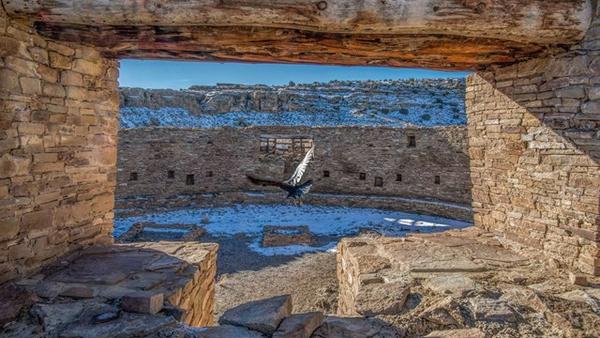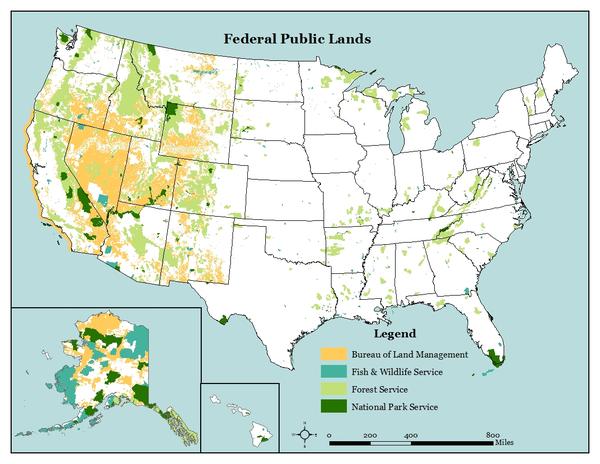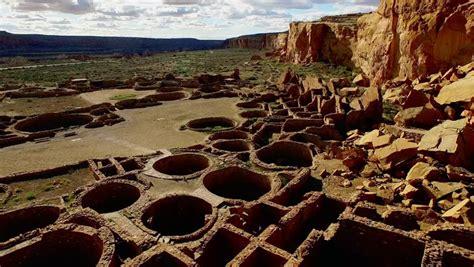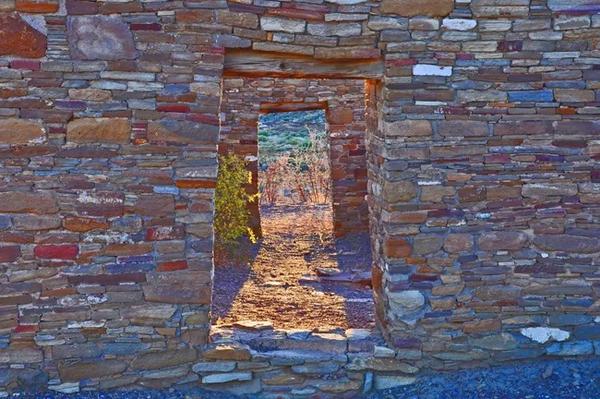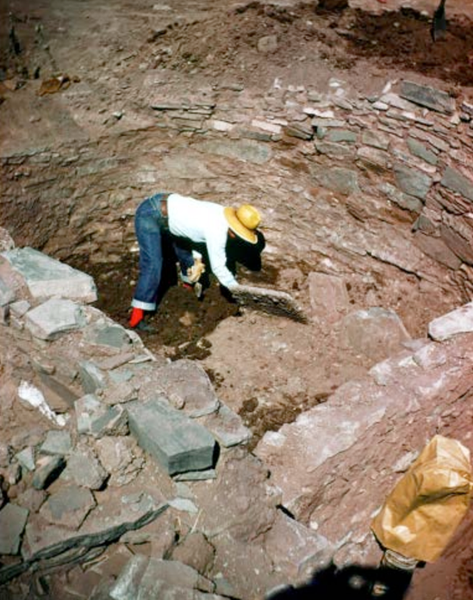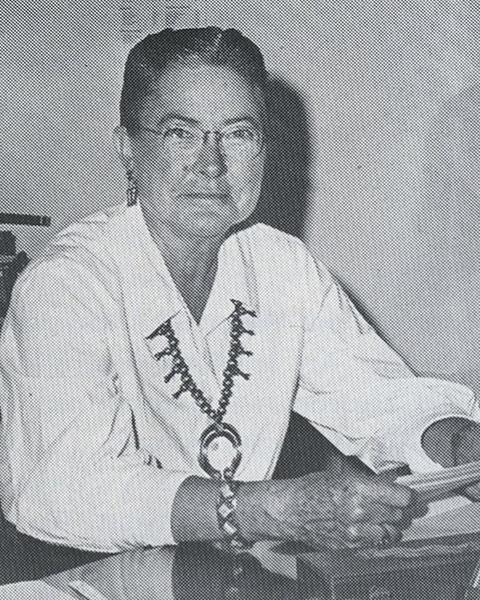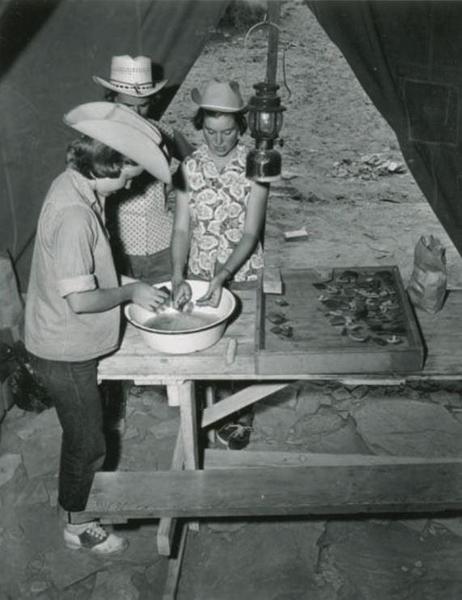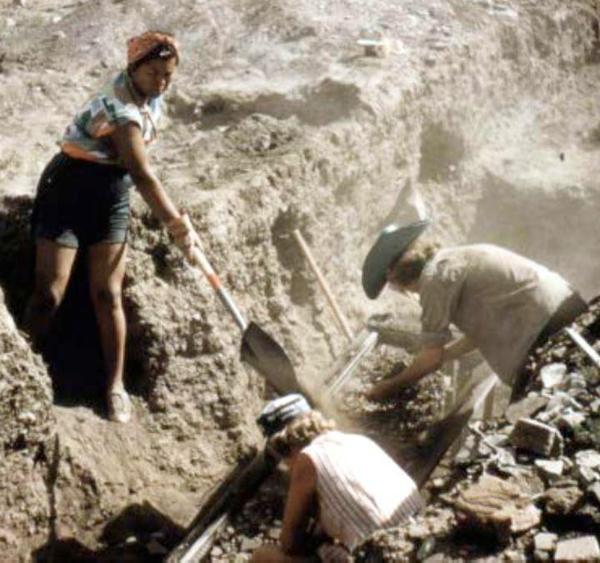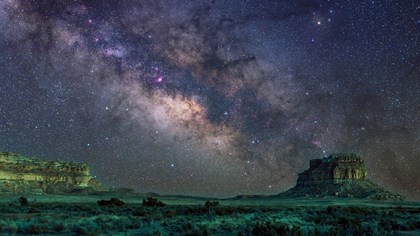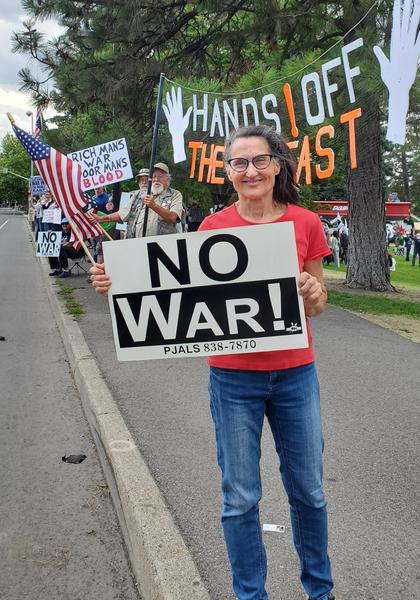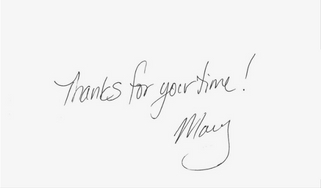June 27, 2025 Hello , I was reeling after the news of our bombing attack on Iran, but already the president has moved on, governing by ALL CAPS social media posts and insulting the looks of Zohran Mamdani, winner of the Democratic primary for New
York City Mayor. Have you seen Mamdani? Trump is obviously envious. And frightened of this practicing Muslim of
Indian and Ugandan descent who beat the establishment white man, Mario Cuomo, by nearly 8% of the vote. But whatever the days news, we must keep our hand on the harrow and not be distracted from the Republican agenda that has the potential to decimate our lives in so many ways. We can take heart and direction from the story of Bertha Dutton, her hand on the shovel, she "dug, dug, dug," making a lasting impression on American archeology and opening new worlds to young women. Bert, as she was known by friends and colleagues, specialized in the archeology and ethnology of Mesoamerica and the southwestern United States, her first excavations at Chaco Canyon located northwest of Albuquerque, New Mexico. The area is now Chaco Cultural National Historical Park...in the bull's eye of an executive order President Trump signed on his first day in office
The
Federal Bureau of Land Management proposes revoking a rule that created a 10-mile buffer zone surrounding Chaco Canyon, opening hundreds of thousand acres of public land to new oil and gas leases.
Chaco Culture National Historical Park preserves a major center of ancestral Puebloan culture dating
between 850 and 1250 CE. Photo courtesy National Park Service. Before I go further, I want to show you the public lands the Republican administration would like to
open for resource extraction. It's not difficult to imagine the Trump Corporation mapping out golf courses and hotels in these stunning lands and wilderness areas.
Map of all U.S. public lands by Kara Clauser, Center for Biological Diversity. The preponderance of our public lands lay in the west, but they belong to all 347 million of us and are enjoyed by people from all over the country and around the world. Think Yellowstone National Park. These land are irreplaceable. Chaco sits in a valley in northwest of Albuquerque, NM, where once thrived an ancient civilization. The ancestral home of the Pueblo people features some of the best preserved pueblos and artifacts from a thousand years ago. A good part of what we know about this ancient site is thanks to an early American woman archeologist. I'm getting to her story! But first, I want you to appreciate the beauty and value of Chaco Canyon. "The monumental scale of its architecture, the complexity of its community life, the high level of its community social organization, and its
far-reaching commerce created a cultural vision unlike any other seen before or since," according to the National Park Service.
Pueblo Bonito from the Pueblo Alto trail. Photo by Andrew Kearns, National Park
Service. Pueblo Governor of Acoma Charles Riley says, "Chaco is a place that's very sacred to us. It contains many of our beliefs and origins. "Many times, people don't understand our connection with these sites, whether it be Chaco, Mesa Verde, Bears Ears....Many of our religious tribal leaders still go back to these places and call upon our ancestors to guide and protect our people, and
that's what people don't understand." Unfortunately, (or fortunately, depending on your view) remote and isolated Chaco Canyon and it 4,730 documented
archeological sites also sit atop stores of oil, gas and minerals.
Doorways at Chaco Culture National Historical Park, National Park Service photo. Some Navajo descendants of the ancient people who lived here, now have land allotments in the region and they argue a 10-mile buffer could cost local residents royalties from gas and mineral extraction. New Mexico’s senators and congressional delegation are in agreement about the importance of the buffer zone and sent a letter to Interior
Secretary Doug Burgum earlier this month. "While oil and gas development is important to this state, we should also recognize that there are many other areas for development in San Juan County and New Mexico, it should not occur in a place like this," stated the letter. "Chaco Canyon contains the most sweeping collection of Native American cultural
sites in the United States." I wish I could tell you it was a native woman excavating the treasures of Chaco Canyon, but in the early 1930's, when archeology student Bertha Dutton arrived it was rare to find any women on a dig site who wasn't doing the cooking and washing. Native archeologists were rarer still. Edgar Hewett at the University of New Mexico bucked controversy, allowing, even encouraging women to attend his archeology field school at Chaco. He invited Bertha and she jumped at the chance. Eventually, writing her thesis after excavating a house ruin southeast of Pueblo Bonito
near the south end of Chaco Canyon. The small Ancestral Puebloan house is called Leyit Kin, Navajo for "way down deep house."
Bertha Dutton holding a flagstone floor piece at an unidentified archeological site.
Dutton was
an internationally respected scholar dedicated to preserving and interpreting Southwest Indigenous history, crafts, and contemporary culture. As an anthropologist, museum leader, author, and speaker, she significantly deepened our knowledge of New Mexico’s tribal communities. But she also had an enormous impact on introducing teenage girls to the world of archeology, leading Girl Scouts on expeditions in the southwest.
By 1947, she had become Dr. Bertha Dutton, curator at the Museum of New Mexico, where in partnership with the Girl Scouts of America, led senior Scouts
from around the nation on a two-week camping tours of archeological sites in the Southwest. Over ten years, some three hundred girls toured museums, heard lectures by
visiting scholars, and “Bert” herself, on ancient lifestyles and artifacts. They also traveled hundreds of miles touring dig sites, becoming so covered with desert road dust, they nicknamed themselves “Dutton’s Dirty Diggers.” The Girl Scout Archeological Mobile Camp gave teens a deep dive into the rich cultural and scientific heritage of the American Southwest and introduce them to new career possibilities.
Scouts washing artifacts in the lab tent. Source: National Park Service Lesson Plan In the early years, the girls did not excavate during the camping trips, but 1951, due to demand by the teens, Bert upgraded the program to an actual archeological field school. For the next five years, Senior Scouts excavated at Pueblo Largo in the Galisteo Basin near Santa Fe. They stayed in tents at the dig site, learn proper excavation
techniques, recorded their observations in field notebooks and processed artifacts in the laboratory tent. This was a far cry from what was expected of girls in 1950's America. In Dutton’s Dirty Diggers: ‘She Taught Us to Be Bold, (El Palacio Magazine, Summer 2006) Leslie Cohen wrote women were expected to be housewives, not weild shovels and “travel the dusty and dangerous roads of the Southwest in vehicles of questionable reliability.” Bert and her girl scouts proved young women were interested in more than “glamour…dates, and lipstick.” Girls could tackle the work and even excel in the scientific field of archeology.
Scouts excavating at Pueblo Largo. Dutton Collection, B. Bauer photo. Source: National Park Service Lesson Plan
In the evening, around the campfire, the girls sang songs, including one they made up about themselves and Bert, the words fun and yet rife with rife with the deep truth of their lives. From the pup tens down at Dutton’s to the place where Pueblos dwell To the dear old mountain rocks we love so well— Where the Diggers all assemble, with their tea cups raised on high And the magic of our singing casts a spell, Yes, the magic of our singing, of the songs we love so well, “Tell me why”—“We are the Diggers”—and the rest. We will serenade our Bert, while life and love they last, Then we’ll pass and be forgotten with the rest. We are poor little Scouts who’ve been led astray Following Bert Girl Scout songsters out on a
spree Digging to the end of eternity Lord have mercy on such as we Following Bert.
Night Sky at Chaco Culture National Historical Park. Bert gave these young women a taste of what it was like to follow
their own interests and ambition, to see that even so called "man's jobs" were possibilities for them. Her warm, joy-filled personality and enthusiasm for archeology inspired the girls, her students and all she met through her long career in the field and as curator of the Museum of New Mexico. She modestly summed up her career..."I dug, dug, dug." A simple way of saying, she put one foot in front of another with passion and purpose, which is a great model for us in these troubled times. Like my article today? Forward this email to share with family and friends.
Sources https://digitalrepository.unm.edu/nm_women_aauw/5/
Here's me, putting one foot in front of another this past Sunday.
Follow me on social media
This newsletter is a reader-supported publication. To support my work, consider becoming a paid subscriber.
Read
a great book? Have a burning question? Let me know. If you know someone who might enjoy my newsletter or books, please forward this e-mail. I will never spam you or sell your email address, you can unsubscribe anytime at the link below. To find out more about my books, how I help students, teachers, librarians and writers visit my website at www.MaryCronkFarrell.com. Contact me at MaryCronkFarrell@gmail.com. Click here to subscribe to this newsletter. |
|
|

